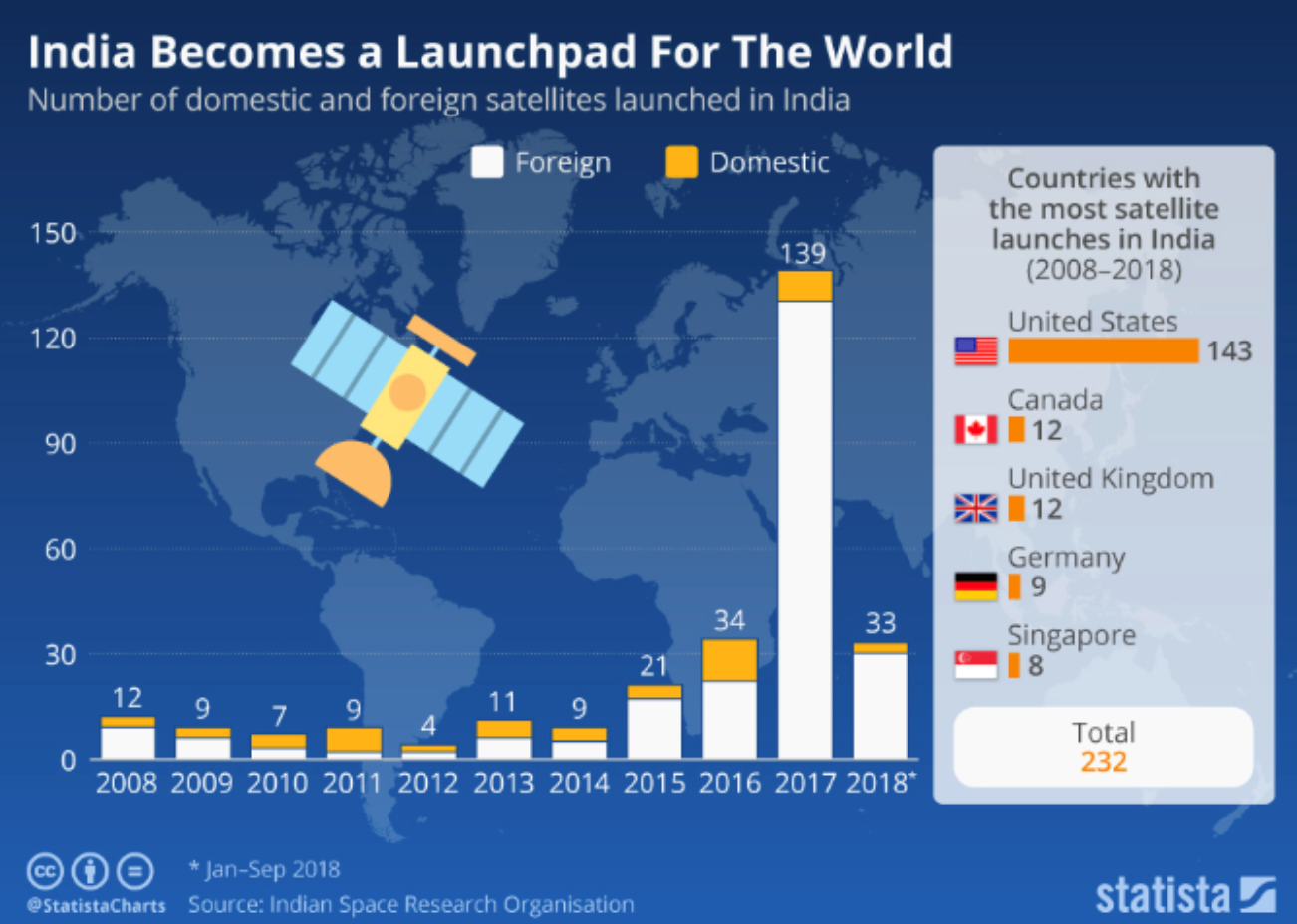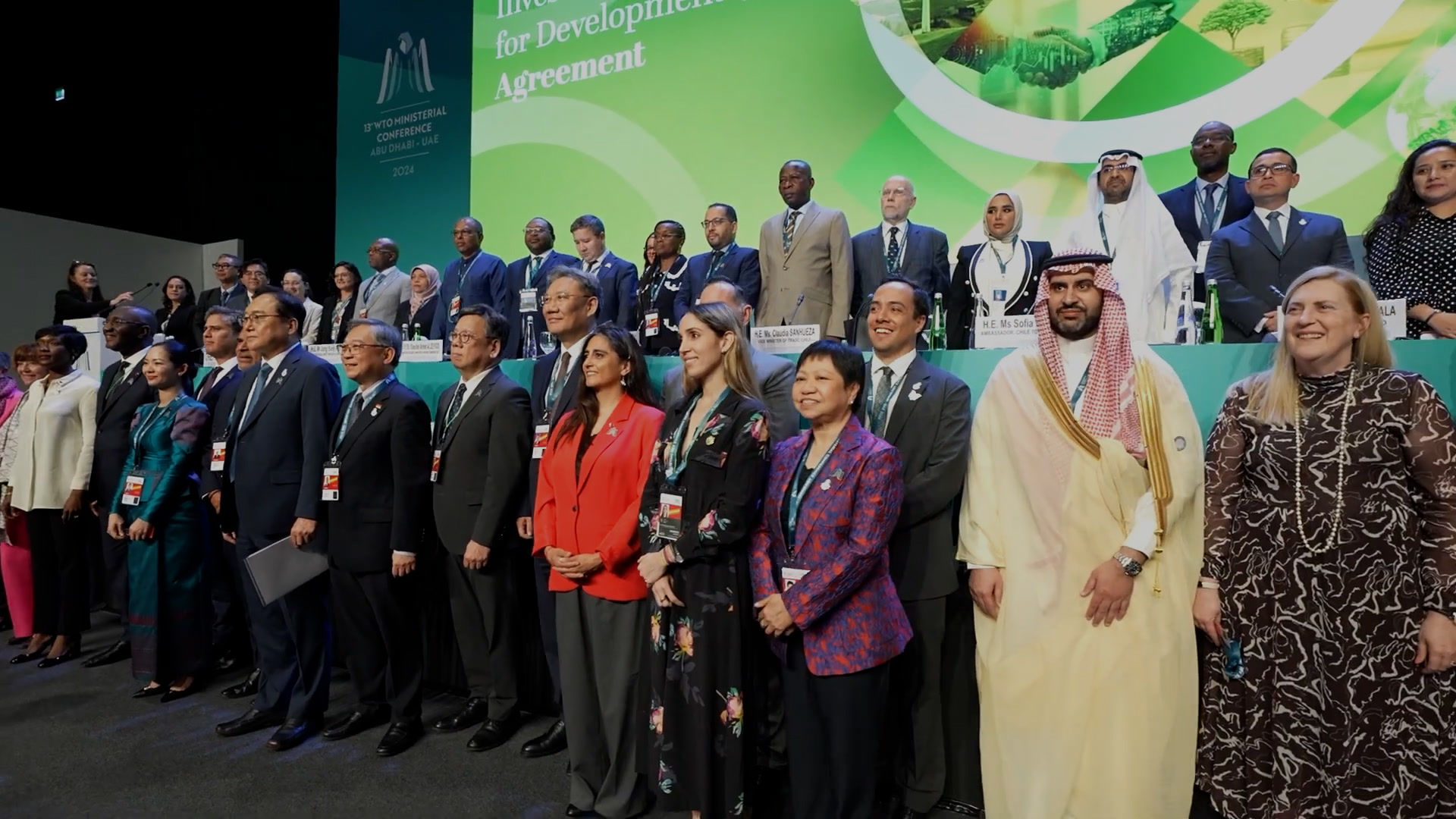India's strategy in space is changing. Here's why

Image: REUTERS/P. Ravikumar - RC1E55233870
Dr. Rajeswari Pillai Rajagopalan
Distinguished Fellow & Head of the Nuclear and Space Policy Initiative, Observer Research Foundation
Get involved with our crowdsourced digital platform to deliver impact at scale
Stay up to date:
Geopolitics
Half a century after humans first walked on the Moon, space is still as much about scientific discovery as it is about strategic competition.
As was the case during the Cold War, outer space is an arena of terrestrial geopolitics. We can see this in the increased impetus for competition in various achievements in outer space, such as Moon landings, Mars exploration and, more directly, in the creation of space forces in various countries – France being the latest to announce it intends to establish a space command to improve defence capabilities.
Yet, despite outer space being once again a field of power competition, there are also some differences from the Cold War years. First, and most significantly, there are many more countries and actors involved: in Asia itself, China, Japan and India are major spacefaring nations, and smaller players such as South Korea, Australia and Singapore are developing their own space programmes.

Added to the increase in countries is the entry of the private sector into space. A key difference in the new geopolitics of space is that both terrestrial competition – and its reflection in outer space – is now along multiple axes, rather than just the single U.S.-Soviet one.
Today, there is increasing power competition in Asia, particularly between China and its neighbours - India, Japan and Australia. Some of this is also reflected in outer space. As a corollary, we are also beginning to see greater cooperation between some countries in outer space, including India and Japan, both of which are concerned about the rise of China.
India also cooperates in space with the US, Russia and France. Much of the competition India has on land, on the other hand, is with China. Therefore, India has negligible cooperation with China in space, and equally, little competition with the other space actors.
A competitive chain reaction that (sometimes) reaches space
What occurs in space can be the result of a geopolitical chain reaction. For instance, consider the US-China-India relationship: China often takes action because of its strategic competition with the United States.
This has an impact on India, forcing India to respond. But India’s response to China has an effect on Pakistan, which then responds to India. This cascade can be seen on land, and at times, in space. For example, China’s first successful anti-satellite (ASAT) test in January 2007 was to demonstrate a catch-up effort with the United States. But once China tested its ASAT in 2007, India had little choice but to develop its own ASAT because of the need of deterrence.

But in the space arena, the competitive cascade does not travel all the way to Pakistan because Pakistan’s space programme is underdeveloped. While Pakistan has expended considerable national wealth in keeping pace with India in its nuclear and missile capabilities, it has not done so with regard to outer space.
On the other hand, there might be a security incentive for Pakistan to demonstrate that it also has an ASAT capability.
Pakistan could also develop other counterspace capabilities, including cyber and electronic means to target India’s space assets. While this remains speculative so far, the history of India-Pakistan competition suggests that this remains a possibility.
Evolution of strategy
India had long maintained a rather doctrinaire approach toward space security, emphasising the peaceful uses of outer space and opposing the weaponization and militarization of space. Thus, India had opposed the US Strategic Defense Initiative programme and other efforts to build ballistic missile defences, let alone deploying ASAT systems. The reasons for such an approach was fairly clear: India did not house these capabilities.
But by the early 2000s, India’s position had begun to change as Pakistan began acquiring long-range missiles. India felt the need to build ballistic missile defences, leading New Delhi to take a sympathetic view of the George W. Bush administration’s decision to withdraw from the Anti-Ballistic Missile (ABM) treaty in late 2001. By the end of the decade, as India’s own capabilities increased, it was clear that India was becoming more discriminating in its attitude towards space security.
China’s ASAT test in 2007 helped advance India’s process of revaluating its space strategy. India realised that its growing investments in outer space - until then largely civilian in nature - were now under threat from China’s new security capabilities. India also started thinking more about how to manage outer space for security purposes. As a result, India established a space cell under its Integrated Defence Headquarters shortly after China’s ASAT test.
In April 2019, India established the Defence Space Agency (DSA) as an interim measure to command the military’s space capabilities. All of this meant that India had to have a much more nuanced position than a blanket approach that opposed any militarization or weaponization of outer space.

However, the consequences of unbridled militarization and the weaponization of outer space has negative implications for India. Therefore, while India is pursuing a strategy that satisfies its own security interests, it still wants some international control on the militarization and weaponization of outer space.
Don't miss any update on this topic
Create a free account and access your personalized content collection with our latest publications and analyses.
License and Republishing
World Economic Forum articles may be republished in accordance with the Creative Commons Attribution-NonCommercial-NoDerivatives 4.0 International Public License, and in accordance with our Terms of Use.
The views expressed in this article are those of the author alone and not the World Economic Forum.
The Agenda Weekly
A weekly update of the most important issues driving the global agenda
You can unsubscribe at any time using the link in our emails. For more details, review our privacy policy.
More on GeopoliticsSee all
Kate Whiting
April 4, 2024
Laia Barbarà and Claudia Galea
March 12, 2024
Robin Pomeroy
March 1, 2024
Nicolai Ruge and Danny Quah
February 28, 2024
Gayle Markovitz
February 23, 2024






